iPhone Mirroring was one of the biggest announcements for macOS Sequoia and iOS 18 this year. And while the public updates for these software won't arrive until later this year in the fall, eager fans were quick to install the early versions of these OS in a bid to try this feature. However, everyone was quickly disappointed upon discovering that the first release did not ship with iPhone Mirroring. Fortunately, with the second release, that distress will turn into delight as iPhone Mirroring is now available to use. Let's get on with it.
Setting up iPhone Mirroring
To get started with iPhone Mirroring, update to the latest Developer Betas from the settings of your iPhone and macOS. Your iPhone and Mac should be signed into the same Apple ID, and near each other with Wi-Fi and Bluetooth enabled for iPhone Mirroring to work. iPhone Mirroring will work even if your Mac is not connected to Wi-Fi.
- Now, on your Mac, open the Finder and go to 'Applications'.
- Open the application for 'iPhone Mirroring'. You can also find the app using Spotlight search.
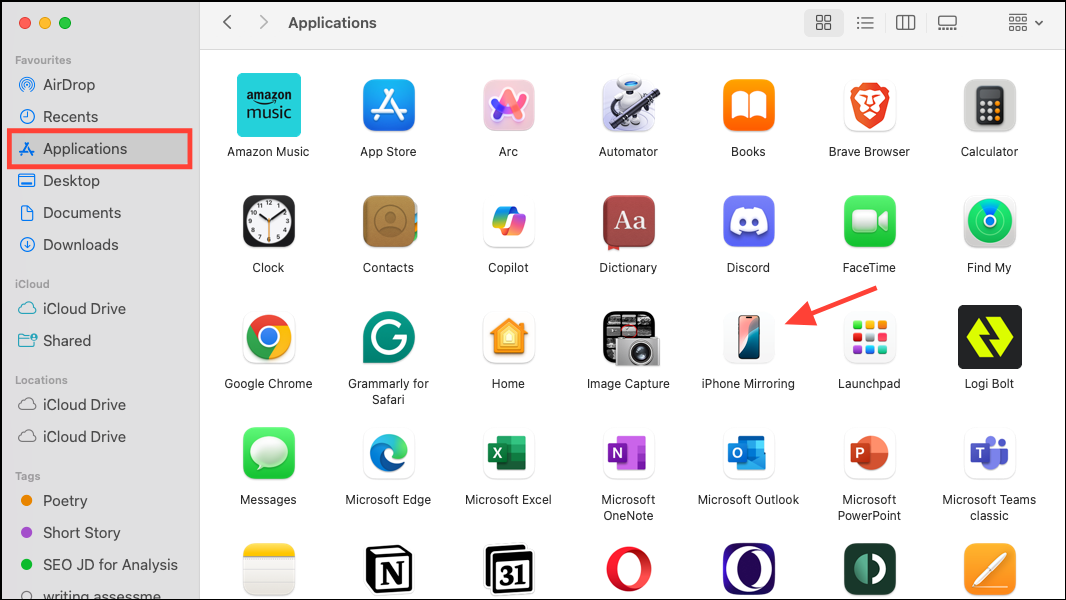
- Click on 'Continue' to proceed. To connect your iPhone and Mac, you'll need to unlock your iPhone using your passcode.

- Enter the passcode on your iPhone.

- Within a few seconds, iPhone Mirroring will be ready to use. Click on 'Get Started' on the Mac to proceed.

- You'll need to enter your Mac password to connect iPhone Mirroring initially. Enter your login password.
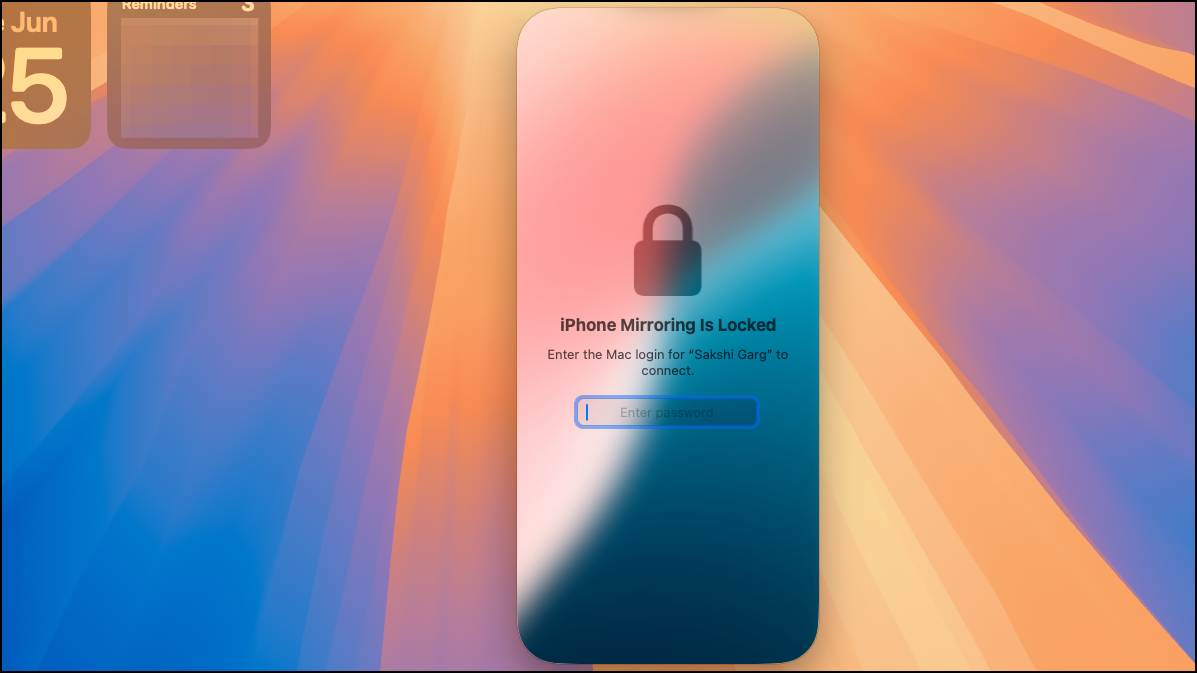
- Then, you'll get a prompt asking whether you want your Mac to require the user password/ TouchID each time you want to use the iPhone Mirroring app on the Mac to authorize automatically when the Mac is unlocked. Choose according to your preference; you can change it later from the iPhone Mirroring app settings.

- Now, your iPhone is ready to be used from your Mac.
Using iPhone Mirroring
Once you've set up iPhone Mirroring, you can start using your iPhone on your Mac right away. You'll also start receiving notifications from (qualifying) apps from your iPhone on your Mac whether the iPhone Mirroring app is running or not.
While using iPhone Mirroring, your iPhone's Camera, Microphone, and Notification Center are not available in the Mirroring app (which makes sense since you can access the notifications from the Mac's Notification Center; iPhone notifications have a little iPhone icon on them.) You also cannot open the Control Center but perhaps it will be available in subsequent app updates.
Before you begin, your iPhone should be locked to use iPhone Mirroring.
- There are two ways to launch iPhone Mirroring on your Mac.
- You can either directly open the app or you can click on any notification from your iPhone and it will launch the app.
- To swipe between screens, use your mouse or trackpad.
- To get back to the Home Screen from an app, click on the Home bar at the bottom of the screen.

- Alternatively, hover above the upper edge of the iPhone Mirroring app to bring the window controls. Then, click the grid icon.
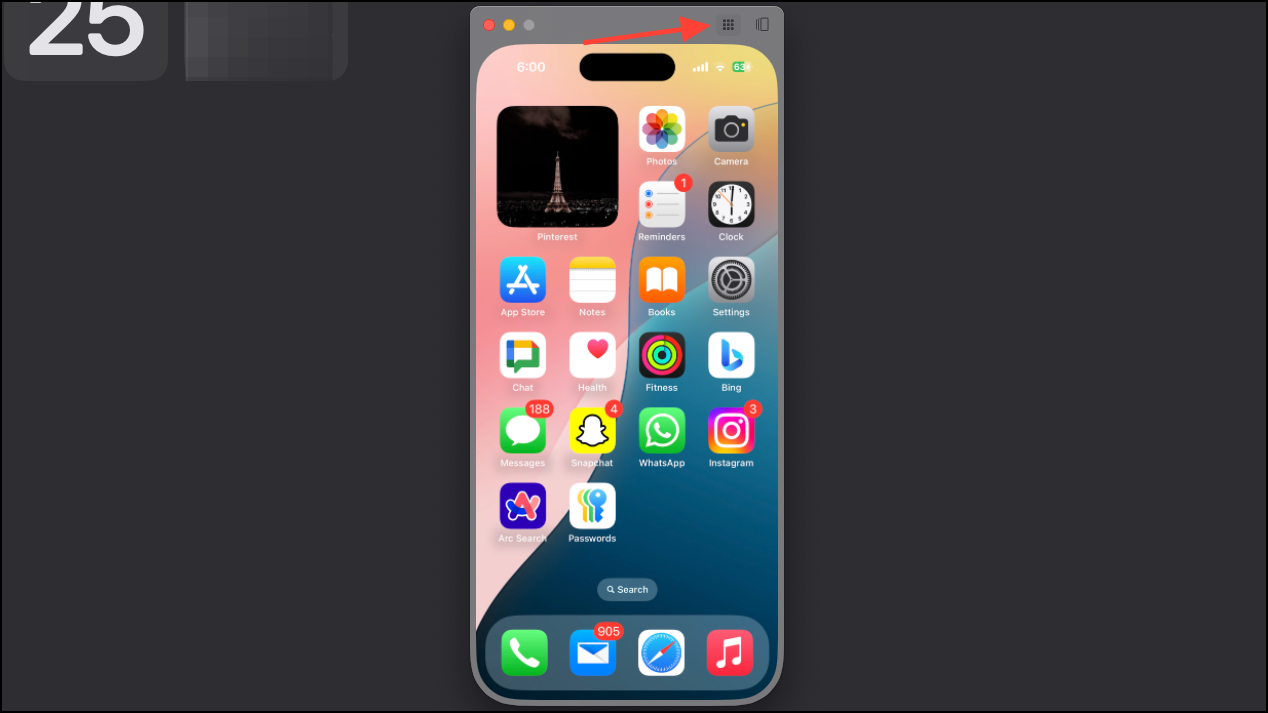
- To open the App Switcher, click the icon next to the grid icon.
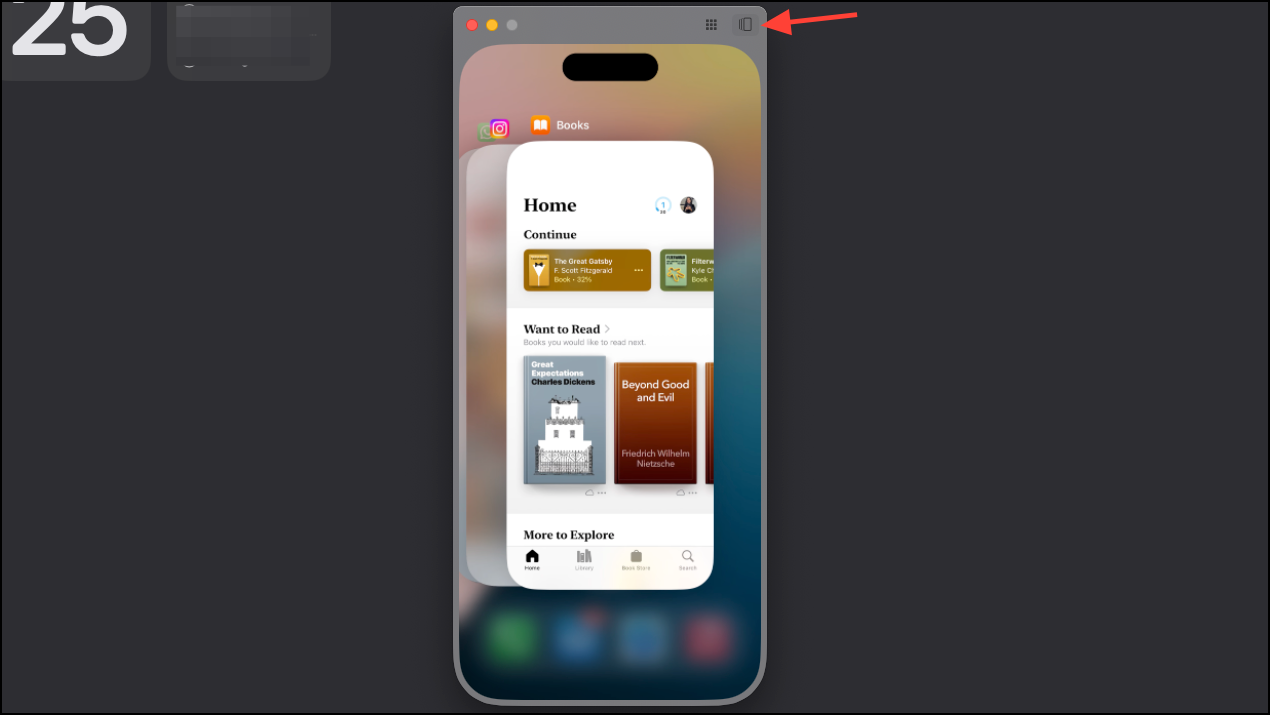
- You can use your Magic Trackpad or Magic Mouse with the iPhone Mirroring app to scroll flawlessly right now. However, if you're using a third-party mouse, you might end up facing issues with scrolling.
- Your keyboard will also work with iPhone Mirroring and it will automatically use your iOS layout when typing on iPhone.
- You'll receive a notification 'iPhone in Use' on your iPhone when using iPhone Mirroring on Mac, which is great. So, if someone else is using your Mac to access your iPhone, you'll know right away. But the notification disappears from the Home Screen when the iPhone is not in use anymore.
- Luckily, it still appears on the Home Screen once you unlock your iPhone.
- If you unlock your iPhone and start using it, it will end the iPhone Mirroring session on your Mac. However, whatever was open on the iPhone on the Mac would seamlessly appear on your iPhone.
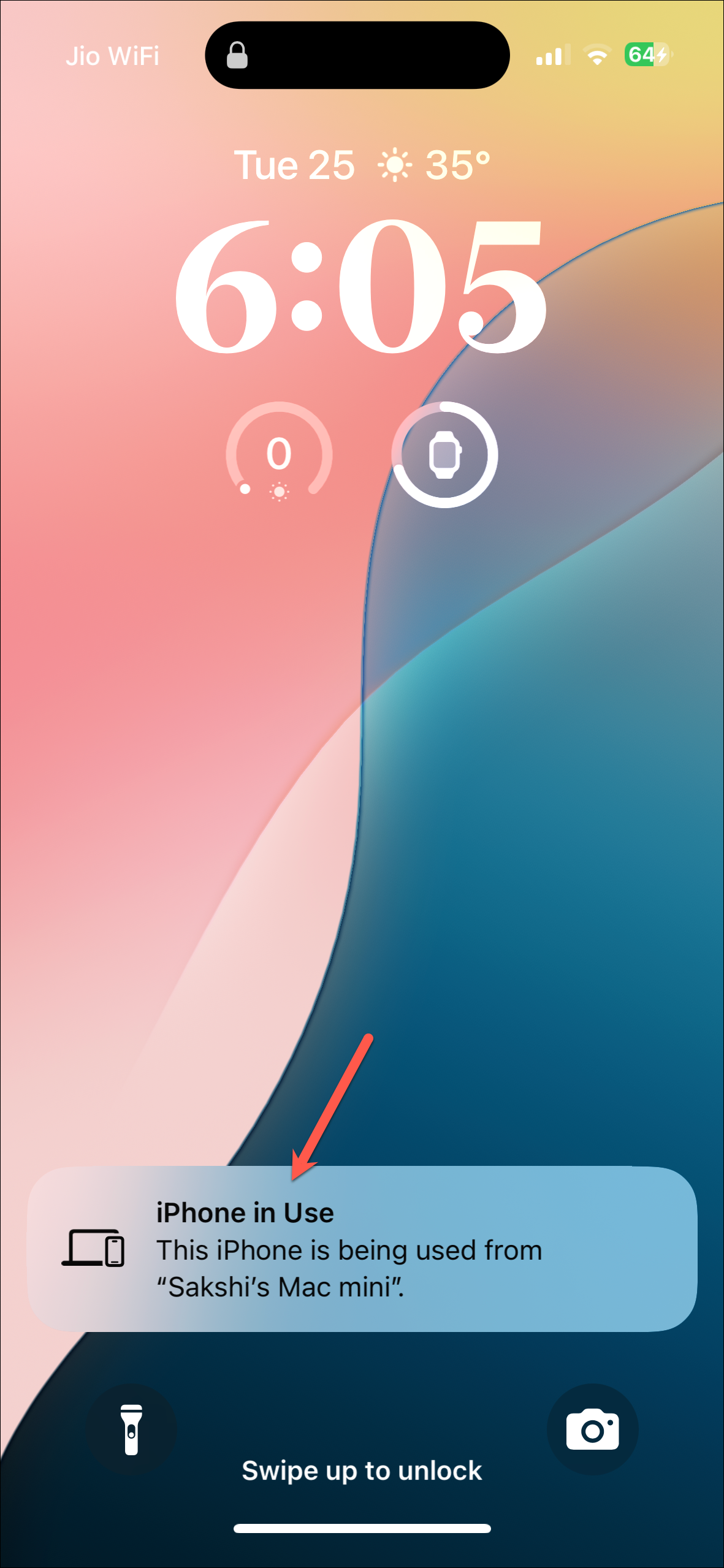
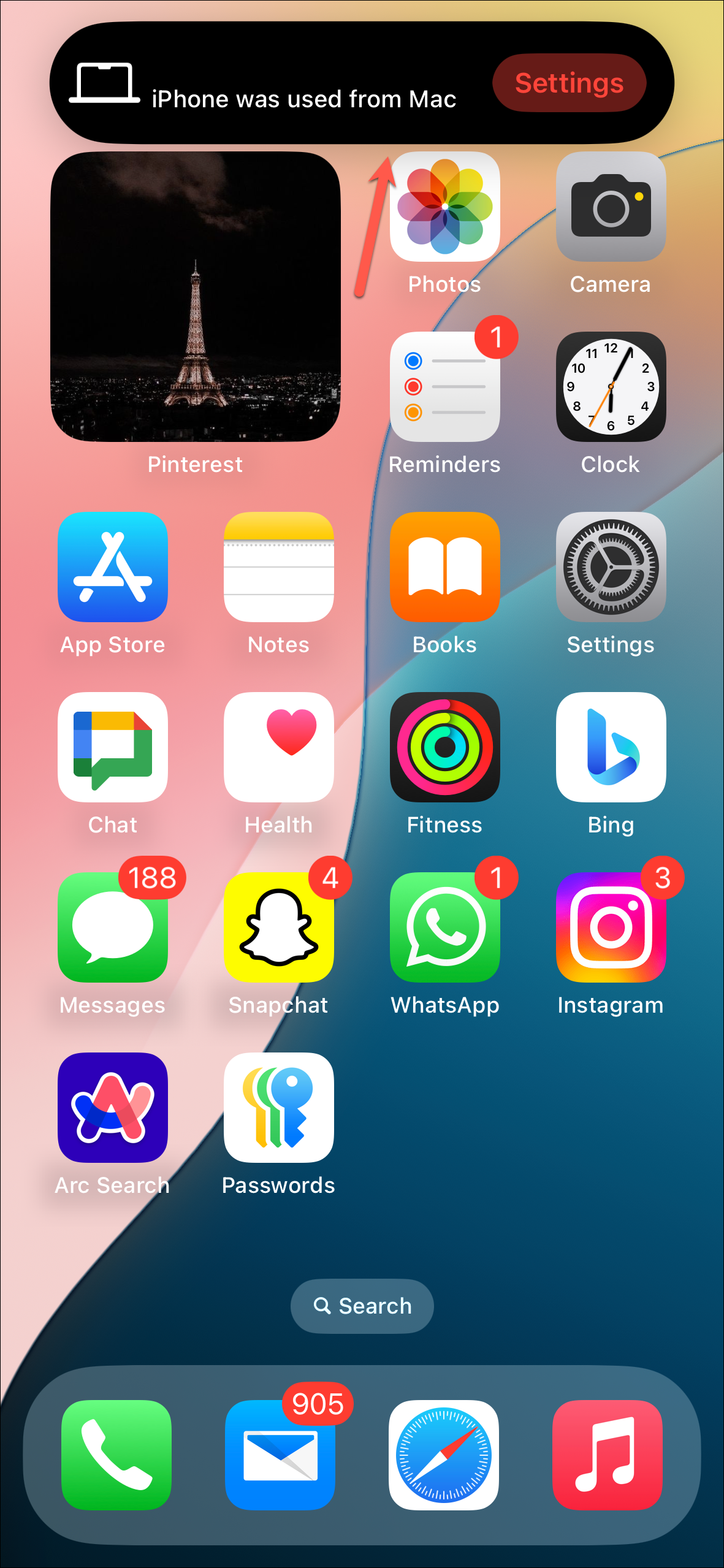
Managing iPhone Notifications
You can also disable the notifications for your iPhone or control which apps to receive notifications from on your Mac.
- To manage notifications to receive on your Mac, open the Settings app on the Mac.
- Then, go to 'Notifications'.
- Click on the 'Allow Notifications from iPhone'.
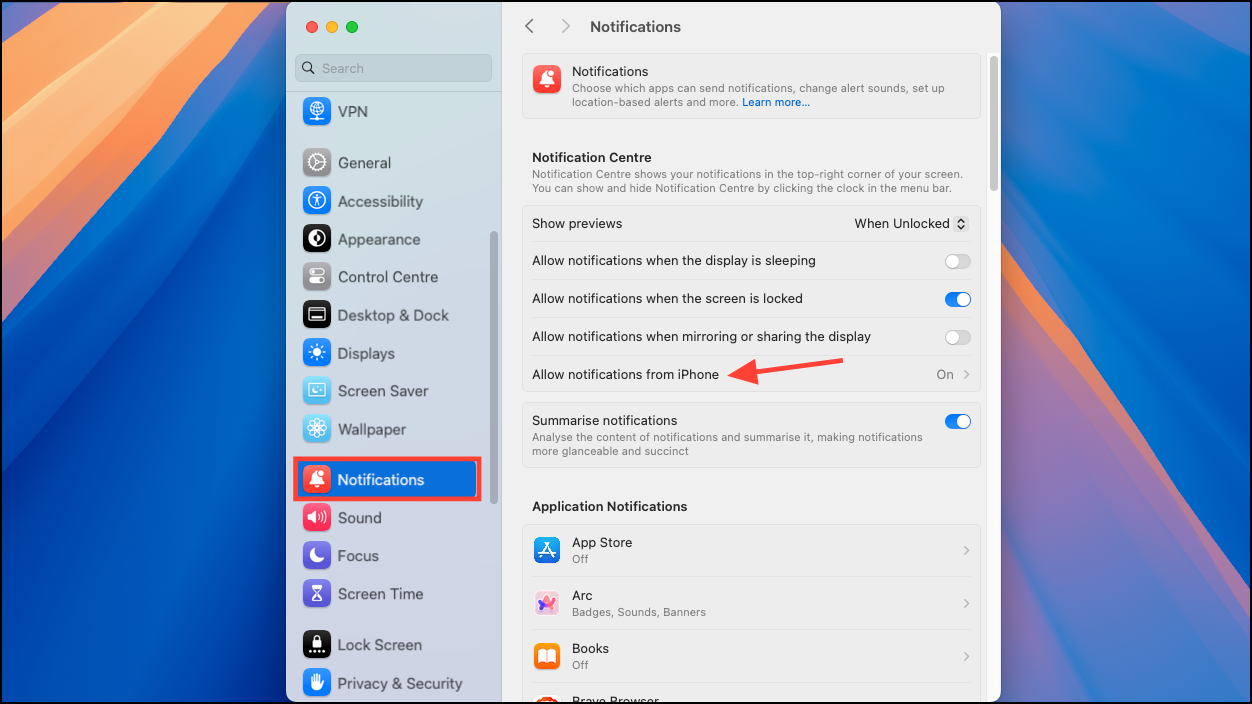
- To disable the notifications completely, turn off the toggle for 'Allow Notifications from iPhone'. Otherwise, keep it on.
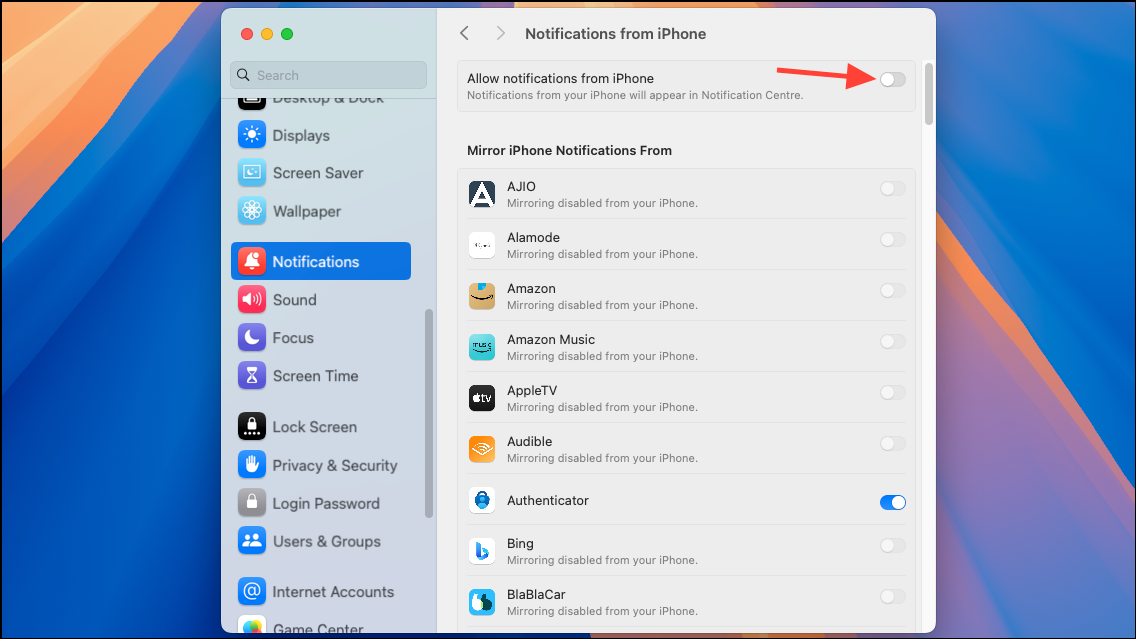
- To manage notifications for individual apps, go to the app and turn the toggle on/ off.
- You'll find that the toggle would be greyed out for certain apps. This would include apps for whom notifications are disabled or added to the Notification Summary on your iPhone. They will only become available if you change their behavior for your iPhone as well.
- Other apps that will have the toggle greyed out include the ones that are installed on your Mac. There is no way to receive iPhone notifications from these apps as long as they are installed on your Mac.
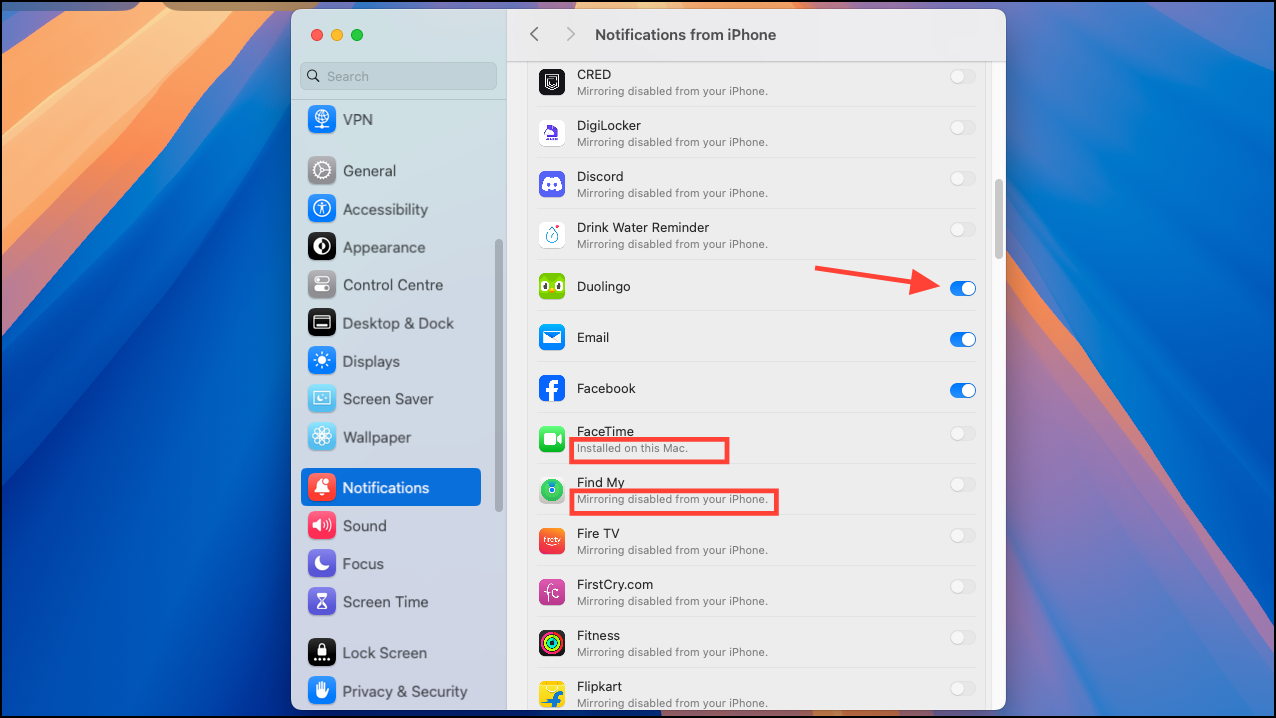
iPhone Mirroring is a great app that will become a staple in people's lives once iOS 18 and macOS Sequoia are released publicly. In its current version, there are some features that aren't working, like you cannot drag and drop files between devices or enlarge the mirrored screen on your Mac. But I can already see how awesome the app will prove to be once all these functionalities are baked in and the bugs are worked out before the public release.

